
31 May, 2019
60th anniversary book hails umbilical lifeline that bonds Thailand-Malaysia
Bangkok – Did you know that the first Prime Minister of Malaysia after its independence in 1957 was half-Thai? That the winner of the 1939 Miss Siam pageant was a Muslim who later married the Sultan of Perlis? That in 1979, Thailand would have been hit by a major power crisis had an emergency shipment of 10,000 tons of diesel not been rushed to Bangkok by Petronas, the Malaysian oil company?
Those fascinating stories are amongst many featured in a coffee-table publication, “Selamat Swasdee”, launched by the Thai Ministry of Foreign Affairs to mark the 60th anniversary of Thai-Malaysian diplomatic relations. It is an extraordinary record of how the two countries have worked in public and private to live up to the description by Malaysia’s third Prime Minister Tun Hussein Onn of “two siblings drinking from the same well.” Rich with historic photographs, timelines and detailed records of the many bilateral, multi-sectoral visits and agreements, the publication is highlighted by interviews with 18 Thai and Malaysian Ambassadors who shared personal memories about their respective terms of service in both KL and Bangkok. Many of the interviews contain insights “which have not been documented in open source materials, the book says.
The book contains extensive insights into the situation in Thailand’s southern border provinces, with one ambassador warning about the machinations of “ill-intentioned people” and another citing the need to be more skeptical about unverified intelligence information emanating from “undisclosed sources.”


Although the 60th anniversary was marked in 2017, it took Ms Pinsuda Jayanama, Director of East Asia Division 1, Department of East Asian Affairs, and her team at MFA, another eight months to complete the interviews with the 18 Ambassadors in both countries. Says the MFA in its introduction, “The imparting of knowledge and experiences is a precious gift passed from a generation to the next. This commemorative book is a tribute to the former Ambassadors and the people of Thailand and Malaysia for their invaluable contribution to the promotion of (bilateral) relations. It is hoped to serve as an inspiration for future generations to continue building the special relationship towards a more cooperative and prosperous future.”

The record takes on added significance when placed in a broader context. The two countries comprise one of Asia’s most geographically and geopolitically important regions. Like an umbilical lifeline, a 1,800-kilometre peninsula connects the Thai capital of Bangkok to Johor Bahru, at the southern tip of Peninsula Malaysia, effectively linking the southern and northern halves of ASEAN. To the North, Bangkok is one of Asia’s top aviation hubs. To the South, the Straits of Malacca comprise the maritime crossroads between the Indian and Pacific Oceans. The Asian Highway runs right through the peninsula, linking Singapore with Kunming.

On the Thai side of the 647-kilometre border are the provinces of Narathiwat, Yala, Pattani, Songkhla and Satun. On the Malaysian side, the states of Kedah, Kelantan, Perak and Perlis, which once used to be under Thai protectorate. Their combined social and cultural heritage is bolstered by economic resources of rubber, palm oil and tourism. Their peoples are bound by two religions of peace, Buddhism and Islam.

Peace, stability and economic progress along this peninsula could make it an Asian powerhouse, uplifting the entire ASEAN region to new heights. It would prove that peoples of the two great faiths can co-exist in harmony – a dream cherished by the late Thai Foreign Minister and ASEAN Secretary General Tan Sri Dr Surin Pitsuwan, the first Muslim to hold both posts, respectively between 1998-2001 and 2007-2012.

Designed to keep that dream alive, the commemorative book covers four main periods:
1) 1957-1975: Highlighted by the joint fight against the Communist Party of Malaysia, after which the two countries played an instrumental role in the formation of ASEAN in 1967;
(2) 1976-1989: Efforts to solve the Cambodian conflict, the 1979 establishment of the joint development area for shared exploitation of the offshore hydrocarbon resources, followed by the joint commission for bilateral cooperation in 1987 as well as the signing of the Hat Yai peace agreement in 1989, ending the security threat from the Communists;

(3) 1990-2005: Post-Cold War era, the 1997 Asian financial crisis and the resurgence of violence in the Southern Border Provinces (SBPs), establishment of the Joint Development Strategy (JDS) and the annual consultation between the prime ministers; and
(4) 2006-2017: Marked by changes in domestic politics on both sides, the peace dialogue process and continued efforts to enhance connectivity in the border areas, while dealing with non-traditional security issues.
Tan Sri Dr Surin is hailed for his key role as cultural bridge. His background as a Thai Muslim from humble origins born in Nakhon Sri Thammarat, in a village populated by Malays from Kedah as well as his academic qualifications, such as his dissertation on “Islam and Malay nationalism”, served as a framework to analyse the situation in the Thai SBPs. He strongly felt a personal sense of responsibility to engage Muslims in peace building. Indeed, the government of Perak was mulling the setting up of an Islamic Centre for Global Peace and Non Violence in Kuala Kangsar, probably with Dr Surin to be appointed as the first chairman. Sadly, Dr Surin died suddenly on 30 Nov 2017.
In fact, the bilateral connection goes back even further. Thai Ambassador Chawan Chawanid (term of service in KL, 1984-1989) recalled that Tunku Abdul Rahman Putra (1903-1990) the then Prime Minister and Foreign Minister of Malaysia, was the product of a Thai-Malaysian marriage. He was the seventh son of Sultan Abdu Hamid Halim Sha of Kedah, (entitled Chao Phraya Ritthisongkram Ramabhakdi Sri Sultan of Saiburi in the pre-1908 Siamese order) and Che Mangalalara (Nueng Nandanakara), whose father was Luang Naraburirak, a Siamese district officer in Nonthaburi. The Tunku went to school in Bangkok and his “early childhood was imbued with a sense of Thai Muslim cultural heritage.” In 1985, just five years before his death, he made a trip to visit the descendants of Kedahans in Nongchok, Bangkok.
Ambassador Chawan has powerful words for his relationship with the former Malaysian PM. He says:

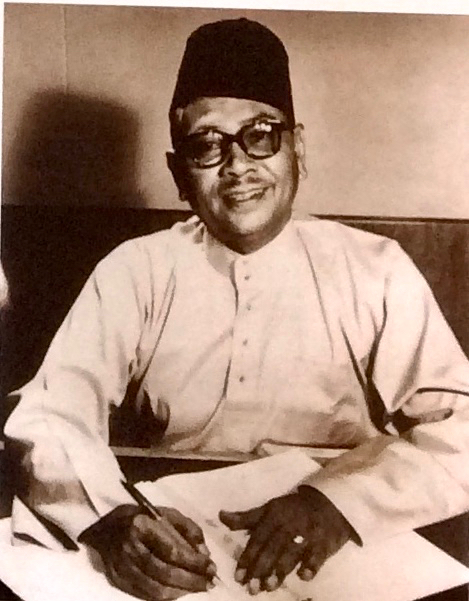
Tunku Abdul Rahman
Indeed, the bonds strengthen further by what the book calls “a fairytale-like story in 1951 when the then Sultan of Perlis, who later became the Yang di-Peruan Agong V, fell in love with and married Riam Petsayanawin, a former Miss Thailand who was a Muslim. “Such marriage has echoed the close bond and the longtime kinship between the two countries.”

Miss Siam 1939
When the Federation of Malaya declared independence in 1957, Thailand was among the first countries to establish diplomatic relations. The first Ambassador was Mr. Sunthorn Hongladarom whose son Dr Chira Hongladarom attended the MFA book launch. Malaysia sent its first ambassador to Bangkok in 1958.
As the book points out, in those days, the over-arching challenge was the Cold War. The need to prevent expansion of communism led to the 1955 formation of the Southeast Asia Treaty Organisation (SEATO) in Bangkok. During the 1960’s and 1970’s Thailand and Malaysia jointly battled the communist insurgency. The Thais gave extensive help to the Malaysians, including the right of “hot-pursuit” upto a limit of five kilometers in Thai territory. Victory came after several years, culminating in the 1989 Hat Yai Peace agreement. Thereafter, a few peace villages were created at the Thai border for the disbanded CPM units, while all ex-members received compensation money. Today, a museum of CPM history and a one-km hideout tunnel have become Betong tourist attractions.

After the formation of ASEAN, the end of the Indochina wars and the Cold War, the focus turned towards economic issues.
In 1979, a milestone was marked by the signing of the MoU on the establishment of a joint authority for the exploration and exploitation of resources of the seabed in a defined 7,250 square area where both countries had overlapping claims in the Gulf of Thailand for a period of 50 years. In 2004, the Joint Development Strategy was setup with a shared objective to promote economic development and well-being in the southern border provinces. Over the years, much has been done to promote cross-border trade, tourism and transportation connectivity.

Ambassadors and officials of the Thai Foreign Ministry at the book launch.

Several ambassadors had memorable personal anecdotes to share.
Mr. Nissai Vejjajiva (1979-1984) narrated how he had to help avert a power crisis. “Thailand was faced with a severe shortage of diesel. On the first day that I assumed duty in Malaysia, Gen Kriangsak Chomanan, the then Prime Minister, instructed me to seek assistance from Malaysia in supplying 10,000 tons of diesel to Thailand. Since I had just assumed duty, my network circles in Malaysia were still limited. I decided to directly meet with Dato Hussein Onn at a golf course in Selangor to request for assistance. He advised me to consult the matter directly with Petronas. As a result, Petronas was able to supply diesel to Thailand on time and prevent an electricity shortage in the country.”
Ms Suchitra Hiranpruek, (1997-2001) was Thailand’s first and only female envoy to KL so far. She said, “Being a lady ambassador did not pose any difficulties for me Malaysia is an open-minded country which respects gender equality.” She admired the many successful Malaysian women holding high positions in politics. She also used her gender to her advantage, cultivating ties with the wives of senior Malaysian public figures and getting involved with the ASEAN ladies Circle.
Ms Suchitra said she had visited almost every state in Malaysia, especially those sharing borders with Thailand. She said, “I was especially impressed with the strong and cohesive Malaysian-Siamese communities, numbering more than 60,000. These Malaysians of Siamese origin have preserved and sustained Siamese tradition and culture such as Songkran and Loy Kratong festivities as well as the use of the Thai language.”
Dato Nazirah Hussain (2001-17) was Malaysia’s first and only female ambassador to Thailand. During the major floods in 2011, the Malaysian embassy in Bangkok joined a local foundation to assist the affected areas. “I travelled by truck to Ayudhya province. I remember giving a bottle of water to a local resident of the province. While accepting the bottle, he told me that he will not drink the water because he would like to keep it as a keepsake from the Ambassador of Malaysia.”
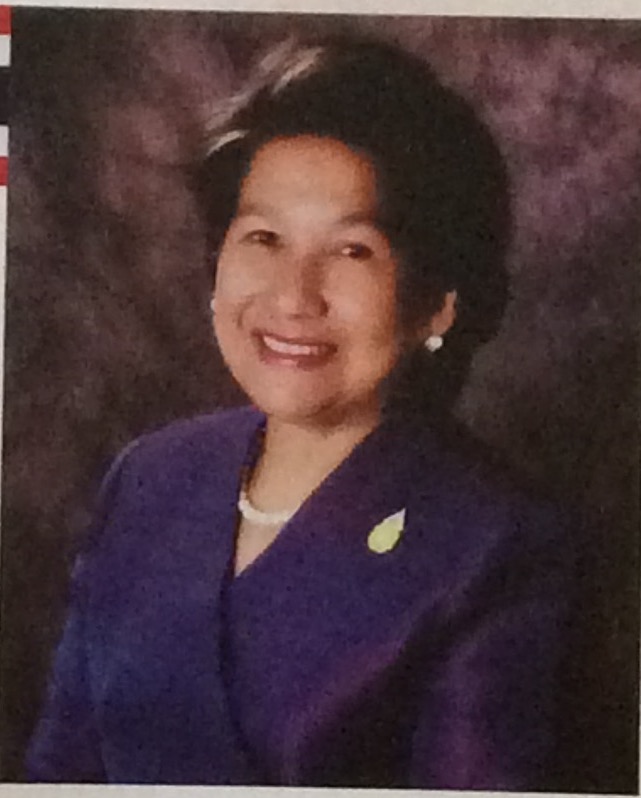 Ambassador Suchitra Hiranpruek |
 Ambassador Dato Nazirah Hussain |
Datuk Husni Zai bin Yaacob (2008-10). A native of Kelantan, which borders Narathiwat, he arrived just the day before the Thai political protestors shut down Suvarnabhumi airport, and was immediately involved in coordinating the transfer of Malaysians back home by land. Others had to leave via U-tapao airport. Both these missions were accomplished thanks to the good cooperation from the Thai agencies, he says.
Ambassador Krit Kraichitti (2012-17) worked with the Penang Heritage Trust and Thailand Malaysia Business Council to organise the Penang symposium on Thailand-Malaysia Historical Relations to mark the death centenary of Phraya Ratsada Nuradit (Khao Sim Bee Na Ranong) in Penang in February 2013. Members of the Na Ranong family played an important role in political, economic and social relations between Siam and Melayu in the 19th century. The symposium highlighted the importance of history as the means to promote trade and investment and tourism and people-to-people relations. A year later, a sister-city arrangement was signed between the two islands.
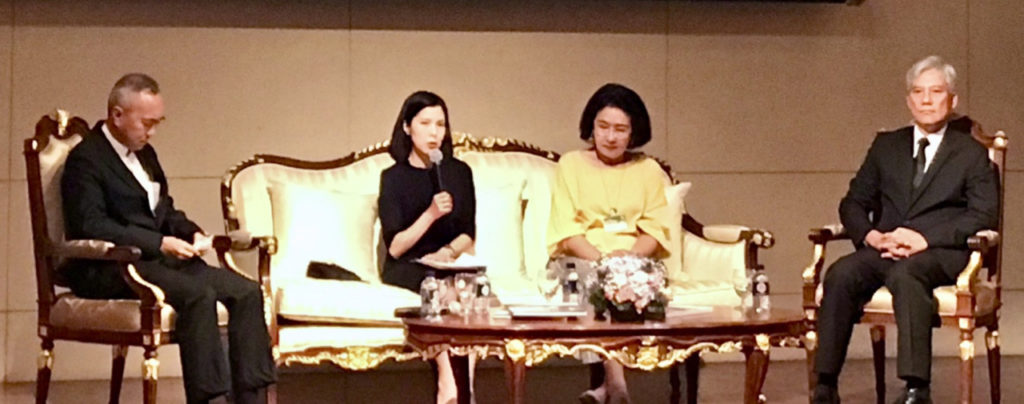
Mr. Thana Duangrat (2009-12) recalled that there were about 200,000 Thai workers in Malaysia when he took up his post, but only around 7,000 were legally employed, mostly in the restaurants. Many other Thais were working in agricultural and fishery sectors in Sarawak. Though exposed, they could not be deported without proper legal documentation. The Thai embassy in KL had to closely coordinate with the immigration department in Sarawak to facilitate the deportation.
All the Ambassadors referred to sporadic but ongoing disturbances in South Thailand as an issue that clouds an otherwise rosy bilateral scenario. All agreed with the complexity of the challenge, and one Ambassador very specifically flagged the disruptive role of “ill-intentioned people”.
Datuk Husni Zai bin Yaacob (2008-10) admitted: “Many perpetrators of violence in the southern provinces have used Malaysia as the safe haven by crossing the border from Thailand to Malaysia after committing violence in the area.”
However, Mr. Oum Maolanond (2004-07) noted the enormous complexity of the situation due to political, cultural and geopolitical and domestic considerations. While the Thais are right to demand a handover of the perpetrators, he said that it is important for the Thais to provide clear proof of evidence to legitimise the arrest, such as names, photographs, arrest warrants, details of the violation of the specific law. He said it is necessary to verify the information from the Thai intelligence agencies, particularly on classified information from undisclosed sources. “My experience during serving in Malaysia made me doubt the reliability of some of the information received,” he said.
Dato Shaarani Ibrahim (2005-08) noted that Thai-Malaysia relations “demand great focus and attention and good rapport between leaders of the two countries.” He said, “Mr Thaksin Shinawatra admired Tun Dr Mahathir Mohamad. However the chemistry between Mr Thaksin and Tun Abdullah Badawi seemed lukewarm. This has an effect on relations during the said period…
“The Thai side misperceived that Malaysia had a hand in the conflict. Since the rapport between Thaksin and Badawi was not close, the two sides issued “megaphone diplomacy” in dealing with the issues rather than taking diplomatic channels, further straining bilateral relations. It is important to correct any misperception that each side may have on each other through diplomatic channels and dialogue.”
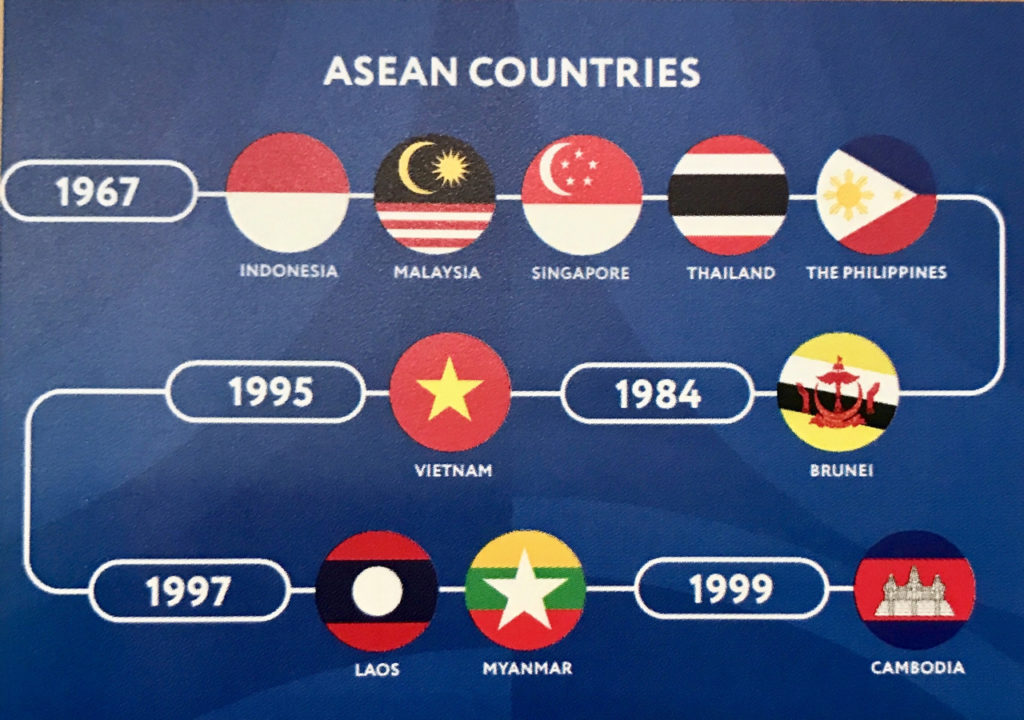

Mr. Piyawat Niyomrerks (2007-09) took up his post after the Krue Sae (April 2003) and Tak Bai (Oct 2007) attacks by Thai forces. He flagged the challenge he faced in “re-building trust between the two peoples.
He cited an example of how public statements can further complicate an already complex scenario. In an interview with a local newspaper in 2006, a “Thai high level official” had been quoted as saying that remittances by Thai workers in the “Tom Yum restaurants” in Malaysia were being used to support violence in the SBPs. This caused resentment from Malaysia and upset the Thai workers who were legally employed in Malaysia. To them, it was normal for labourers overseas to remit income to the families in Thailand. They considered this general accusation harsh and unfair and temporarily cut communications with the embassy.”
At least two Ambassadors warned that relations will stagnate unless reinvigorated with new ideas and thinking.
Dato Syed Fadzillah Ariff Awaluddin (1996-2001) warned of dangers ahead. He noted that social media and Internet have facilitated electronic communication amongst people, including diplomats, but made it less important to build personal connections by meeting each other in person.
He said, “At the moment Thailand and Malaysia seem to be losing touch with the essence of their relations. There is a lack of conscious efforts between both sides. We should make more efforts to meet and to build personal relationships as in the old days….I notice that the foreign policy priorities of Malaysia and Thailand are different. Malaysia has set her priorities in Europe, the Commonwealth and then expanded to the Islamic community while Thailand has given way to building relations with the United States.”
Mr. Damrong Kraikruan (2016-18) said that relations have “receded and lacked momentum.” He attributed this to the “foreign policy divergence as Thailand pursues stronger linkages with the CLMV countries and Malaysia moves towards the Islamic world. Exchanges of high level visits has also become infrequent, he said.
A lack of understanding would lead to misperception and make people fall into the trap of ill-intentioned groups who distort information to serve their political agenda, especially in the southern border provinces.
There was no shortage of recommendations on what could be done to keep the momentum alive:
Mr Oum Maolanond (Thai Ambassador to KL, 2004-07), said Thailand should develop the border areas and facilitate tourism in accordance with the culture and practices of Islam, such as providing appropriate prayer and ablution facilities. Dato Kamaruddin Abu’ (1989-92) talked of the importance promoting halal food collaboration, specifically for export to the Middle East. He noted that more Malaysian companies are investing in Thailand than vice versa. He called for this imbalance to be narrowed.
Ambassador Piyawat called for the construction of the two bridges from Sungai Kolok to Rantau Panjang, and from Tak Bai to Pengkalan Kubor across the Golok river linking Narathiwat to Kelantan. Ambassador Damrong suggested more high level visits and expansion of other bilateral channels of communication such as revitalizing the Thailand Malaysia friendship associations and business councils. He suggested more golfing trips by retired military officials and more trade and investment in high potential sectors such as tourism, logistics, halal food, rubber, palm oil, automotives and the new S-curve industries.
He also called for the Thai government to seriously consider the promotion of Malayu Studies in Thai academic institutions to enhance in-depth knowledge and understanding about the political, economic, socio-cultural, religious and history of Malaysia and its people. Dato Indera Syed Norulzaman b. Syed Kamarulzaman, (2001-2004) called for the many interesting classical literary works of both countries to be translated into Thai and Bahasa.
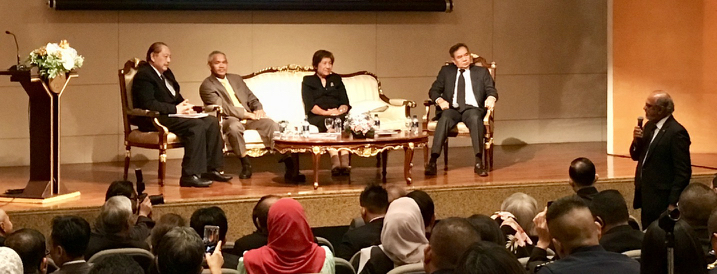
Malaysian Ambassador to Thailand Dato Jojie Samuel sharing his thoughts.
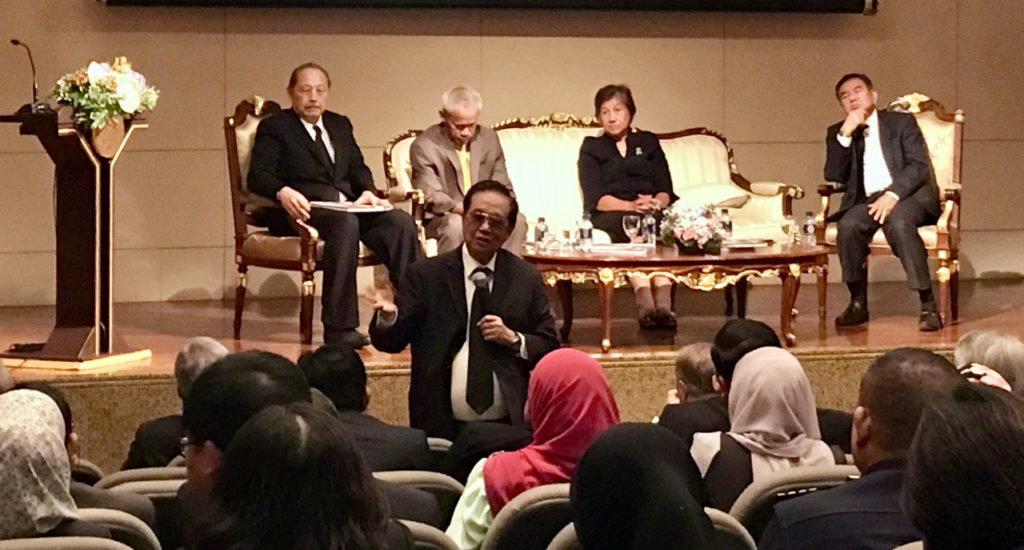
Dr Chira Hongladarom answering a question by Executive Editor Imtiaz Muqbil
In the panel discussion, Ambassador Dato Jojie Samuel (2017-present) called for more cultural and education contacts, saying he would like to see more Malaysian students in Thailand. Dr Chira mentioned the need for more efforts to advance the projects of the IMT-GT.

Finally, Ambassador Chawan flagged the all-important sense of humour that allows both Thais and Malaysians to poke fun at their own idiosyncrasies. He narrated a couple of sayings that he had first heard from Tunku Abdul Rahman, who had a great sense of humour. When a Thai says “why do today what we can do tomorrow!” our Malay brothers would carry that thought further with “why do anything at all!”




Liked this article? Share it!